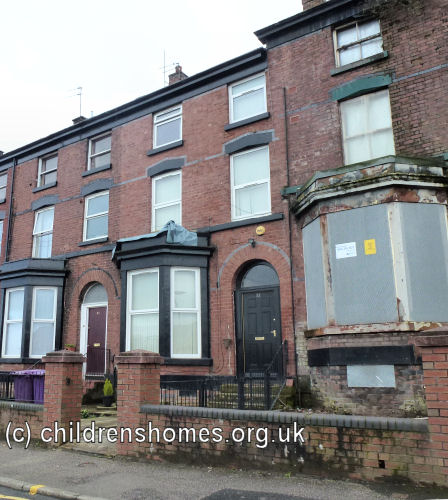Homes for Working Boys/Girls and Auxiliary Homes
A number of children's institutions had satellite establishments which performed a variety of functions, including:
- Providing overflow accommodation for the main home.
- Housing a particular category of inmates, e.g. younger children
- Providing medical/convalescent facilities or holiday accommodation
- Acting as a transition home for those leaving the institution and beginning independent life
Establishments in the last category were often known as Working Boys' Homes, or Working Girls' Homes. They were usually located in urban areas where young people, typically aged 14 to 16, could be given supervised hostel-style accommodation while they began work with local employers. They might also offer a home for those still looking for work or who were between situations.

Former St Vincent's Home for Working Boys, Birmingham, 2013. © Peter Higginbotham
A few Working Boys'/Girls' Homes were not attached to a parent home, for example those run by organisations such as 'Homes for Working Girls in London' and the 'London East End Hostel Association'.
A special category of Auxiliary Homes were those that were accredited to receive boys or girls released on licence from a Certified Reformatory or Certified Industrial School. The usually acted as transition homes for inmates beginning work. Anyone failing to comply with the conditions of their licence could be returned to confinement at the parent institution. The Metropolitan Association for Befriending Young Servants (MABYS) ran several Auxiliary Homes that received girls from Industrial Schools across London.
Auxiliary or Working Homes were usually located in properties rented, leased or loaned for the purpose, rather than being purpose-built premises. The location of a Home sometimes changed over the time of its existence.

Former Liverpool Girls' Industrial School, Auxiliary Home at 52 St Domingo Vale, 2013. © Peter Higginbotham
Except where indicated, this page () © Peter Higginbotham. Contents may not be reproduced without permission.


